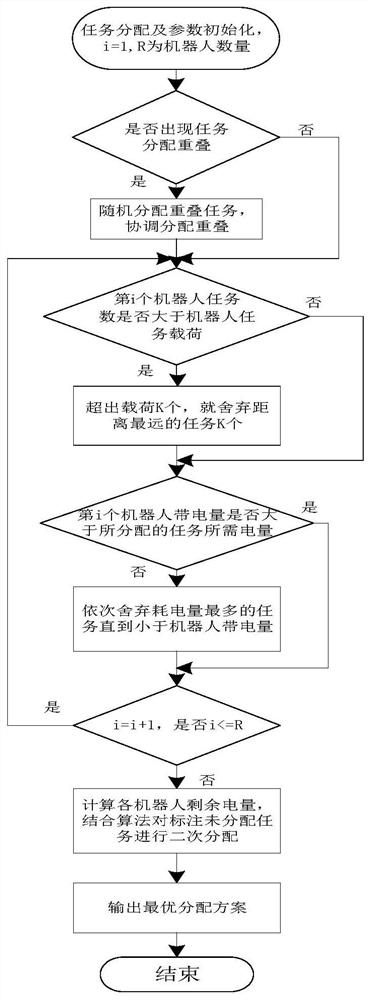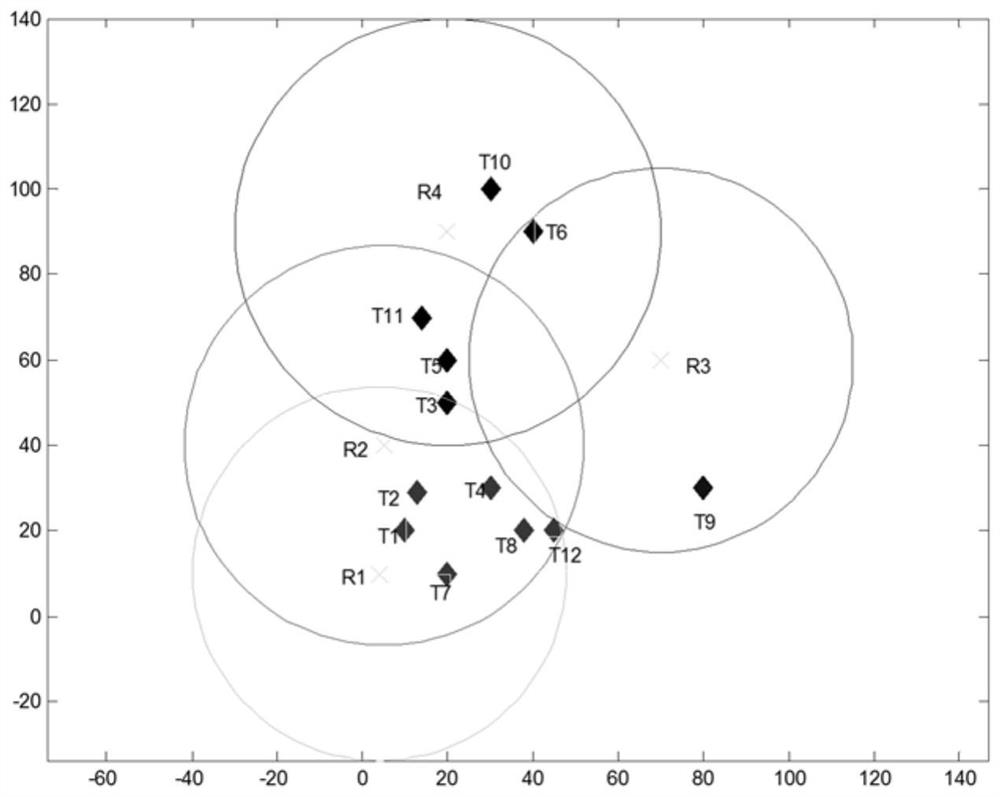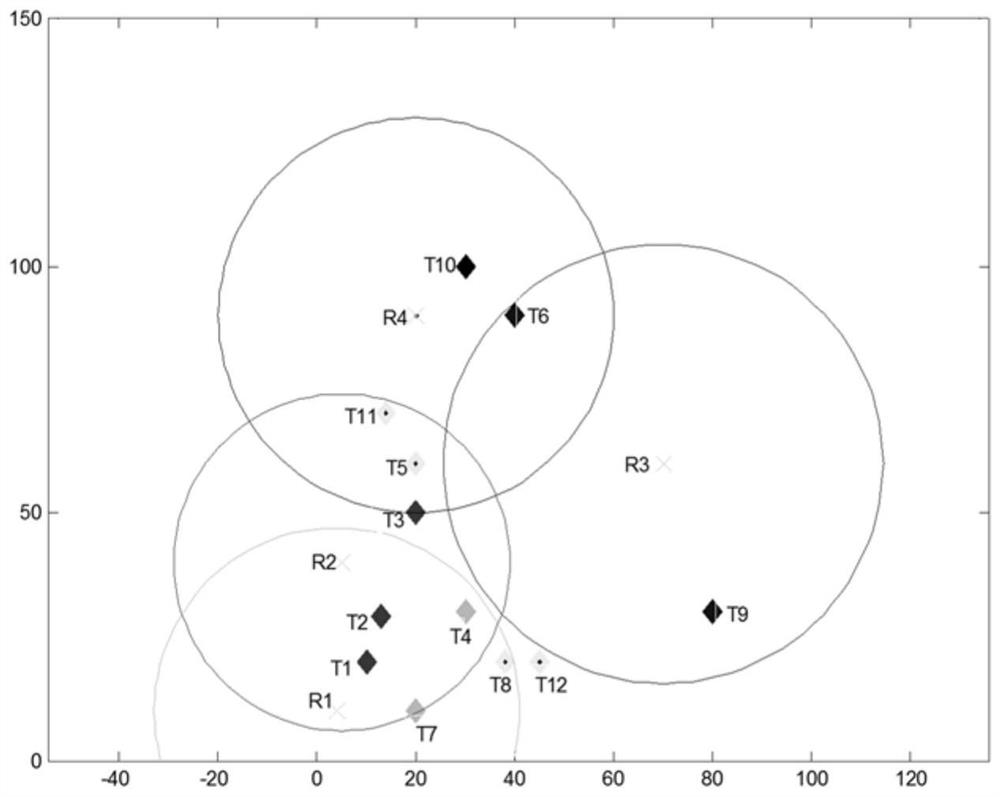A task allocation method based on task allocation coordination strategy and particle swarm algorithm
A technology of particle swarm algorithm and task allocation, which is applied in the direction of calculation, calculation model, data processing application, etc., can solve the problems of task overload, shortage, overlapping task allocation, etc., and achieve the effect of low cost and most cost
- Summary
- Abstract
- Description
- Claims
- Application Information
AI Technical Summary
Problems solved by technology
Method used
Image
Examples
Embodiment 1
[0088] The simulation experiment environment of this paper is on the Windows operating system, and the simulation experiment of the algorithm is realized based on the Matlab2014a environment. The PC is configured with Inter(R) Core-i5-6500@3.2GHz processor and 4G memory.
[0089] S1. Use the particle swarm algorithm to optimize the distribution radius to obtain the initial distribution result. The specific operations are as follows:
[0090]The environment is a logistics warehouse with 4 isomorphic robots. Table 1 shows the performance parameters of each robot. There are 12 tasks randomly scattered around, namely R=4, T=12, the number of particle swarms is set to 10, and the learning factor c 1 =c 2 =2,ω 0 =0.2,V 0 = 0.5, the speed range is [0, 1], and ω is set in the performance index function formula (11). 1 =0.7,ω 2 =0.2,ω 3 = 0.1. And the power consumption per unit distance of all robots is 1, the robot coordinates: R 1 (4,10), R 2 (5,40), R 3 (70,60), R 4 (20,9...
PUM
 Login to View More
Login to View More Abstract
Description
Claims
Application Information
 Login to View More
Login to View More - R&D
- Intellectual Property
- Life Sciences
- Materials
- Tech Scout
- Unparalleled Data Quality
- Higher Quality Content
- 60% Fewer Hallucinations
Browse by: Latest US Patents, China's latest patents, Technical Efficacy Thesaurus, Application Domain, Technology Topic, Popular Technical Reports.
© 2025 PatSnap. All rights reserved.Legal|Privacy policy|Modern Slavery Act Transparency Statement|Sitemap|About US| Contact US: help@patsnap.com



